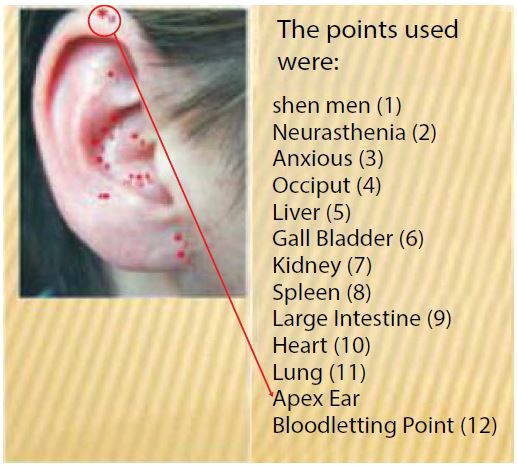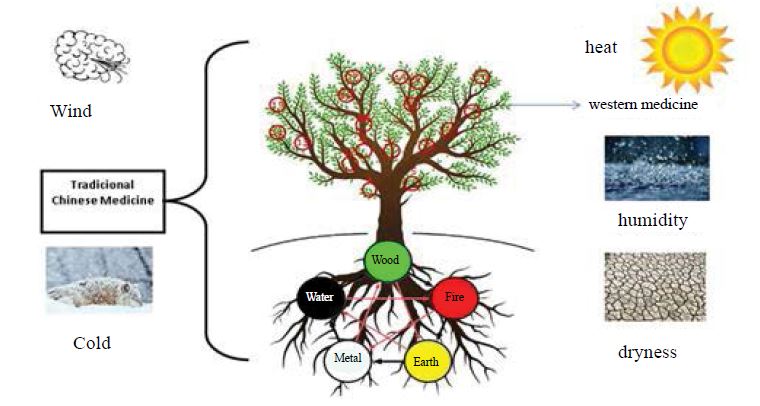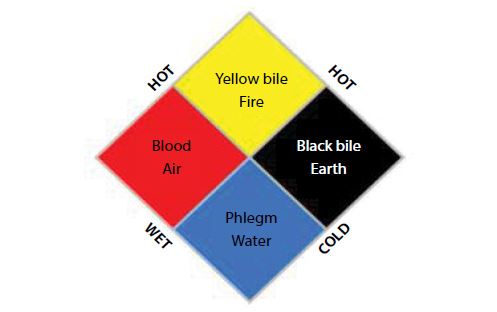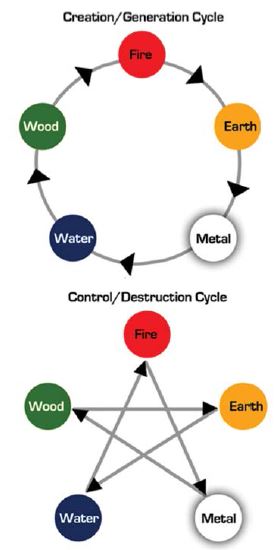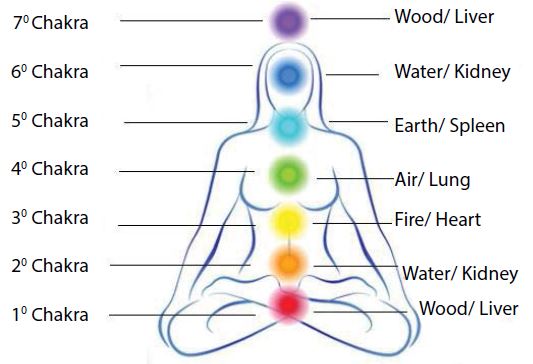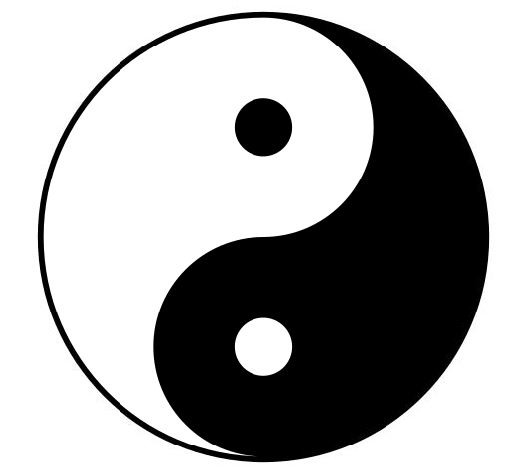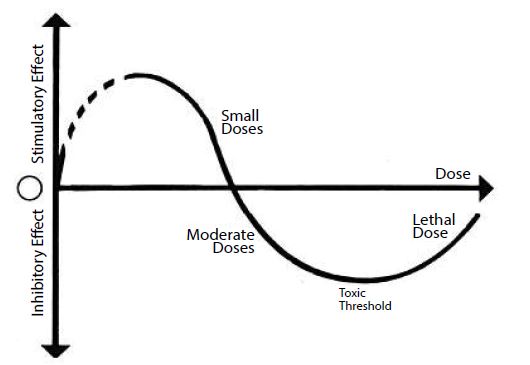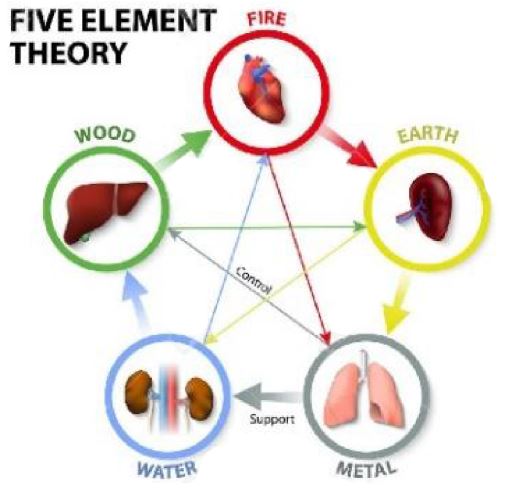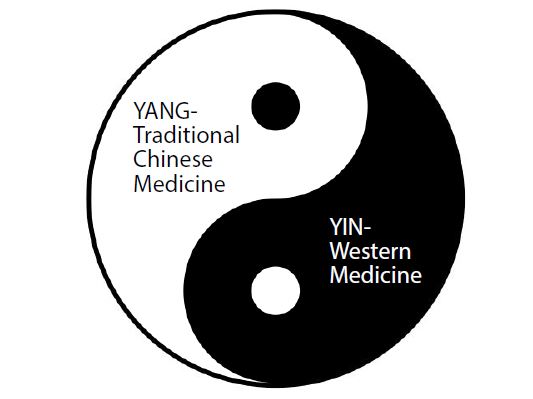Journal Name: Journal of Clinical Case Reports and Trials
Article Type: Research
Received date: 19 September 2019
Accepted date: 03 December 2019
Published date: 13 December 2019
Citation: Huang WL (2019) What is the Cause of Language Impairment in Traditional Chinese Medicine and how can we Treat it? J Clin Case Rep Trials. Vol: 2, Issu: 2 (14-22).
Copyright: © 2019 Huang WL. This is an open-access article distributed under the terms of the Creative Commons Attribution License, which permits unrestricted use, distribution, and reproduction in any medium, provided the original author and source are credited.
Abstract
Introduction: Specific language impairment (SLI) is a language disorder that delays the mastery of language skills in children who have no hearing loss or other development delays. In Traditional Chinese Medicine, language ability is associated with the Heart energy meridian. Imbalances in the Heart energy meridian may cause language difficulties.
Purpose: To demonstrate the importance of treating the Heart meridian imbalance, and to show the effectiveness of this kind of treatment within a short period, in a specific case of a patient who has a LI, and was already facing the usual Western medical treatment.
Methods: Based on a case report of a patient named “F.D.R.”, a five-yearold boy with episodes of anxiety, agitation, urinary incontinence and difficulty in the pronunciation of some specific words. He was intelligent and had good grades in school. The patient was being accompanied by a speech therapist who oriented the parents to seek other kind of treatment, associating the cause of the LI with the behavior of the patient. His grandmother took him for acupuncture treatment, with the main goal of calming him down and improving his social skills, as he was very shy. He was submitted to a treatment with auricular acupuncture, moxibustion, Chinese dietary nutrition and after performing evaluation of the chakras energy, which appeared all deficient, it was also recommend the use of homeopathy and crystal-based medication, to replenish the energy of the chakras.
Results: In less than one month of treatment, the patient showed himself less inhibited, improvement of the urinary incontinence, and correctly speaking the words he used to miss.
Conclusion: The conclusion of this study is that in the treatment of LI, the patient has to be seen in a holistic way, understanding the importance of treating the third chakra or Heart meridian as the root of the problem, not only treating the symptoms.
Keywords
Language Impairment, Heart Meridian, Traditional Chinese Medicine, Acupuncture, Homeopathy, Crystal-based medications, Chakras, Radiesthesia.
Abstract
Introduction: Specific language impairment (SLI) is a language disorder that delays the mastery of language skills in children who have no hearing loss or other development delays. In Traditional Chinese Medicine, language ability is associated with the Heart energy meridian. Imbalances in the Heart energy meridian may cause language difficulties.
Purpose: To demonstrate the importance of treating the Heart meridian imbalance, and to show the effectiveness of this kind of treatment within a short period, in a specific case of a patient who has a LI, and was already facing the usual Western medical treatment.
Methods: Based on a case report of a patient named “F.D.R.”, a five-yearold boy with episodes of anxiety, agitation, urinary incontinence and difficulty in the pronunciation of some specific words. He was intelligent and had good grades in school. The patient was being accompanied by a speech therapist who oriented the parents to seek other kind of treatment, associating the cause of the LI with the behavior of the patient. His grandmother took him for acupuncture treatment, with the main goal of calming him down and improving his social skills, as he was very shy. He was submitted to a treatment with auricular acupuncture, moxibustion, Chinese dietary nutrition and after performing evaluation of the chakras energy, which appeared all deficient, it was also recommend the use of homeopathy and crystal-based medication, to replenish the energy of the chakras.
Results: In less than one month of treatment, the patient showed himself less inhibited, improvement of the urinary incontinence, and correctly speaking the words he used to miss.
Conclusion: The conclusion of this study is that in the treatment of LI, the patient has to be seen in a holistic way, understanding the importance of treating the third chakra or Heart meridian as the root of the problem, not only treating the symptoms.
Keywords
Language Impairment, Heart Meridian, Traditional Chinese Medicine, Acupuncture, Homeopathy, Crystal-based medications, Chakras, Radiesthesia.
Introduction
Human communication is mainly linked to the capacity of speech, which is based on the production of certain sounds, unique in meaning. The human language is extremely complex, and is composed of sound waves of many different frequencies and amplitudes, together with the strength and technique of different muscles [1].
Specific language impairment (SLI) is a language disorder that delays the mastery of language skills in children who have no hearing loss or other developmental delays. LA is also called developmental language disorder, language delay, or developmental dysphasia [1,2].
The diagnosis of language impairment is usually part of a complex evaluation, based on the origin of the symptom. The patient may present difficulty in communication or/and learning disabilities [1].
The treatment, when used, varies according to the type of disorder. In speech therapy, a professional will guide the patient with exercises, in order to strength the muscles in the face and throat and therefore facilitate speech [3].
The National Institute of Deafness and Other Communication Disorders (NIDCD), in a website-article of July 2016, attested that 1 in every 12 American children aged 3-17 has had a swallowing, speech, language or voice disorder in the past year. According to the NIDCD, 8-9% of these children will present a prevalence of speech-sound disorders. According to Western Medicine, the majority of these issues have no known cause [4].
In Traditional Chinese Medicine, language impairment is mainly caused by imbalances in the Heart energy meridian [5]. According to the Five Elements Theory, the function of the Heart is linked to the language faculties [6].
Any imbalance in the Heart meridian may lead to language impairment, but it is also important to remember that in Traditional Chinese Medicine, the patient is viewed holistically, and all energy imbalances in other organs may influence the whole body, including language abilities, as the organs are interconnected, and an imbalance in one organ can interfere in other organs [6, 10-13].
When treating energy imbalances, symptoms of different pathologies, from different origins and specialties can improve at the same time, as presented by the author in 2015 at the Acupuncture Research Conference at Harvard Medical School, in Boston, USA.
In this congress, the author presented the study of a case of patient with leg pain and glaucoma.
This patient was attended in 2006, and was a 70-yearold male, who appeared in the clinic requiring treatment for leg pain, that would not disappear with the use of antiinflammatories medications.
The author performed treatment with auricular acupuncture, apex ear bloodletting and Chinese dietary counselling. After 10 sessions of the auricular acupuncture with apex ear bloodletting, the patient returned, to evaluate the results of his treatment [13].
In this occasion he told the author that the treatment done with auricular acupuncture with apex ear bloodletting and Chinese dietary counselling, as well as improving the leg pain symptoms, also had dropped his intraocular pressure from 40 to 17 [13].
The doctor was not aware about the intraocular pressure of the patient, who had not reported before he had glaucoma, and was being treated for high-intraocular pressure with different medication in eye drops for the past 40 years [13].
The author then, created the proposition, that the treatment done with the ancient medical tools were able to correct the energy imbalances of the patient, that were the origin of the symptoms, both intraocular high-pressure, and leg pain [13].
Using the reasoning of this patient, the author observed that the energy alterations may be the origin of several different symptoms, being able to treat all the symptoms of a patient at the same time.
Purpose
To demonstrate that for treating language impairment in a deeper way is important to understand the root of the problem. In Western Medicine, the cause of language impairment is not known and the treatment is usually done in a symptomatic way, with results that may vary.
Traditional Chinese Medicine reasoning proposes a possibility of comprehending the energy cause of LI, invisible to the naked eye. When using the treatment proposed by TCM, the results obtained are more efficient and deeper.
Methods
This study was based on a literature review of ancient medical tools, and a case report of a five-year-old boy to illustrate the treatment proposed by the author. The patient firstly showed shyness, urinary incontinence, anxiety and agitation. He was recommended to try acupuncture treatment by his grandmother, with the purpose of improving communication and shyness. After a few months of treatment, the grandmother reported to the doctor that he had difficulty in pronouncing some specific words and letters.
Before starting treatment with TCM, he was already being seen by a speech therapist. However, he was still demonstrating aggressive behavior at school and at home.
Figure 1:Auricular Acupuncture Points Used in the Treatment of Case Report 1
Figure 2:Schematic Drawing of the views of Western Medicine and Traditional Chinese Medicine
F.D.R., 5-year-old male patient, had the behavior of an introspective child, had language impairment and was still wetting the bed. He also presented aggressive behavior towards his colleagues at school, pushing and pulling the hair of the other kids. He threw his desk on the floor after being reprimanded by his teacher two different times. There were constant complaints about his behavior at school, with other children in the condominium where they lived and even with the family.
The patient was already seeing a speech therapist, and was performing sessions twice a week since the age of two. The therapist, when questioned about the diagnosis she did and the treatment, declared that that this behavior was due to his incomplete orality. The family was oriented to wait for his gradual evolution.
When he was in pre-school, at the age of five, despite being very loving and intelligent, his behavior would oscillate. He would also be rough and intolerant, and the parents decided to seek medical help, and discovered the possibility of the Traditional Chinese Medicine treatment. The treatment was performed for about six months, and the treatment was interrupted for a few months.
On April 2018, the treatment was restarted. He was once again treated for about one month, and the treatment was interrupted due to other personal issues.
In this period, the patient was treated with auricular acupuncture associated to apex ear bloodletting, moxibustion, dietary counselling, avoiding dairy products, raw food, cold water, excess of sweets, soda, coffee, black tea, chocolate, eggs, honey, coconut and fried food. Together with this counselling, the parents were also oriented to avoid all high-concentrated medications, using only homeopathic and crystal-based medications, after the measurement of the seven chakras, by a method called radisthesia, performed with a crystal pendulum.
The auricular acupuncture points used are described in Figure 1.
In the chakras measurement, the patient presented the lowest energy possible in all seven chakras. Considering a scale of 1 to 8, the patient was at energy level 1 in all the chakras.
The homeopathy prescribed after the measurement of the seven chakras were Sulphur, Calcarea carbonica, Silicia, Natrum muriaticum and Phosphorus. The medication was prescribed in single doses, once a week, in the same order presented here, and with progressive potencies, starting with 30CHXX-20, then changed to 200CHXX-20.
The crystal-based medication prescribed after the measurement of the seven chakras were Garnet, Orange Calcite, Yellow Citrine, Rhodochrosite, Emerald, Chrysoprase, Rose Quartz, Blue Quartz, Sodalite and Tyger-Eye. They were prescribed diluted in apple vinegar, to be taken twice a day (in the morning and after lunch), for a period of one year, in order to restore the chakras energy.
Results
With the proposed treatment, the patient showed great improvement, speaking more and correctly. He also was able to diminish his anxieties, social shyness and the urinary incontinence disappearead within a short period.
The acupuncture was effective and important for different areas of the boy’s life, as acupuncture sessions and appropriate medication reflected very positively in his life. In the first year of elementary school, he was still a little shy, but much more socialized than in the previous year. He also had no conflict episodes with other children at school or at home, although he still had some mood swings. The parents noticed great progress. In such a short time, he was able to accept the frustrations better, and he got more affectionate. Also, his mood oscillation was less frequent.
Discussion
Western Medicine understands the language process as mainly linked to the strength of the throat muscles and the ability to perform different sounds [1-4]. The treatment for language impairment in childhood, when indicated, is usually done by a speech therapist [1-4].
Figure 3:Humorism Theory.
According to TCM, the main cause of language impairment is the imbalance of the energy meridian of the Heart [5,6]. In TCM, the energy of the Heart is responsible for speech and sleep [5]. The Heart is one of the organs, which composes the Five Elements in the Five Element Theory, corresponding to the Fire element, as will be better explained in the following sections [5,6 10-14].
Relation between Western Medicine and Traditional Chinese Medicine
The author, with the main goal of analyzing the differences between Western and Traditional Chinese Medicine, proposed the schematic drawing of the tree, firstly published in the article “The Treatment of Asthma Based on Traditional Chinese Medicine and Homeopathy”, published by the Pediatric Infants Journal, in 2018 [10-13].
According to the author, the treatment for language impairment in Western Medicine is made at the leaf-level, in the schematic drawing of the tree (Figure 2). The treatment proposed with Traditional Chinese Medicine reasoning, treats the problem at the root-level. The author considers all the patient’s symptoms as reflexes of energy imbalances. Language impairment may be a reflex of an imbalance in the energy of the Heart meridian as quoted in the treatment of the glaucoma’s patient. [10-13].
Differently from what was proposed by Galen, the Heart is not isolated at the energy level. To treat this energy meridian, all organs have to be analyzed and treated as well, as the organs are linked to each other as seen in the Five Elements theory and in the Generation and Control Cycle, which will be better explained in a following section [10-13] (Figure 2).
Hippocrates and Galen
The different diagnoses and treatments proposed both by Western Medicine and other ancient medical traditions, if used together, could show us different ways of treating and conceiving different pathologies. However, constantly, these different perspectives are in opposition to each other. The reason for this opposition can be found in history.
The current model of medicine practiced in most Western medical schools is anchored in the ideas of the Greek physician Galen, a physician from the Pergamon, born in 129 BC [15-16].
Up to the present day, Galen is seen as one of the major names in anatomical medical history. He wrote theories about the functioning of the human body as something divided into isolated organs and systems. [15-16].
According to him, each of the organs was self-sufficient, working separately from one another. His ideas and studies are the cornerstone of Western Medicine [16-17].
The studies of Galen were influenced principally by one specific physician, who lived 500 years before Galen, Hippocrates [16-17].
As previously stated by the author, in the article “Why do Patients Still Catch Hospital Infections despite the Practice of Infection Prevention and Control Programs?”, published in April 2018, in the Acta Scientific Journal, Hippocrates is the creator of Humorism, a theory of the comprehension of the body’s functioning. According to him, pathologies of the body are linked to imbalances among the four humors, Blood, Phlegm, Yellow bile, and Black bile [18-19].
According to Hippocrates, these humors would regulate the temperaments. The temperaments were sanguine, phlegmatic, choleric and melancholic. Hippocrates could see in the human body the strength and elements to recover from any pathology. According to him, the physician’s part was only to accompany nature, the true healer. A good treatment would give the body force to face the disease [18-19].
Language impairment in Western Medicine are treated with the focus on the symptoms. [1-4] This way of treatment and reasoning is completely galenic, as it considers the speech a result of the muscles effort. In the example of the tree, it is at the leaf level. [10-13].
Traditional Chinese Medicine, on the other hand, comprehends the language impairment disorders as an energy imbalance of the Heart. The Heart, in Traditional Chinese Medicine, is not an isolated organ, but interconnected with other massive organs energy [5,6,14], as proposed in the Five Element Theory, better explained above, and as proposed by Hippocrates in the Humorism Theory (Figure 3).
Figure 4:The Generation and Control Cycles in the Five Elements Theory.
Five Element Theory
The Five Elements, or Wu Ching, is a theory developed by the ancient Chinese wise men. Observing nature, they were able to perceive a relation in the behavior of the Five Elements. These elements are Wood, Fire, Earth, Metal and Water. According to TCM, these elements interact among themselves at cosmic levels and within our internal organs. [5,6, 10-14].
In the Theory of Five Elements (Figure 4), the five massive organs (Heart, Spleen. Lung, Kidney and Liver) are correspondent to the Five Elements (Fire, Earth, Metal, Water and Wood, respectively). [5,6, 10-14].
When observing the Five Elements relation in nature, they concluded there were many cycles operating among these elements. The main cycles were the Generation Cycle and the Control Cycle [5,6, 10-14].
The author explained the correspondence between the Five Elements and the five external sensorial organs, in the article “Why do Patients Still Catch Hospital Infections Despite the Practice of Infection Prevention and Control Programs?”, published by the Acta Scientific Journal, in April 2018. Mainly, the idea is that all elements have specific correspondences to a massive organ, an external sensory organ and a sense. The Heart is a massive organ, associated with the sense of language [11].
In the same article, the author explains the Generation Cycle or Ke Cycle, which is a relationship of nourishment and support between the Five elements. In the case of the Heart Meridian, corresponding to the Fire element, it receives energy from Wood and sends energy to Earth [5,6, 10-14].
The Control Cycle represents the relationship of control between the elements. This cycle has the main goal of avoiding any element to become more powerful than the others. In this cycle, Water controls Fire, Fire controls Metal; Metal controls Wood, Wood controls Earth and Earth controls Water [5-6]. Both cycles can be visually understood in Figure 4.
Chakras and the Five Elements Theory
According to the author, in the article published on the Journal of Pediatrics and Infants, in April 2019, entitled “Can We Treat Atopic Dermatitis without using Corticosteroids?”, the Five Elements Theory is also associated with the chakra concept of Ayurvedic Medicine [9-10].
In Traditional Chinese Medicine, it is possible to evaluate the energy imbalances through anamnesis, but it is not possible to measure the energy level [5,6]. The procedure entitled radiesthesia, used by other ancient traditions, is able to measure the energy of the chakra centers, correspondent, according to the author and to other studies to the Five Elements organs, as shown in Figure 5.
In the specific case of the patient described, after the measurement of his chakras energy through radiesthesia, using a crystal pendulum, all seven chakras appeared to have low energy, at level one, considering there are 8 levels, and a normal energy level is 8.
Figure 5:Chakras and Correspondence to the Five Elements.
Figure 6:Yin and Yang.
The chakra corresponding to language impairment is the third chakra. According to the Five Elements Theory, this chakra corresponds to the Fire Element, which represents the Heart. In the Mother Cycle or Generation Cycle, the Heart is the child of the Liver, which represents the Wood Element [5, 6, 20].
In the case of the patient, the Heart was deficient, because it was not receiving sufficient Qi from its ‘mother’, which is the Liver. The treatment, in these cases, should be focused on the ‘mother’ element, with the goal of engendering more Qi in the ‘child’ Element. For example, if the Fire Element is deficient the physician may reinforce the Wood Element in order to provide Qi for the Fire Element, which is the Element that needs to be treated in language impairment [5, 6].
In the specific case of the patient described, he had, together with other symptoms, a condition of urinary incontinence, which presented itself as bedwetting. According to TCM, this condition is associated with a Kidney Yang deficiency, this deficiency is the cause of the deficiency of the Liver, Lungs and Spleen, which leads to the deficiency of the Kidney.
In Traditional Chinese Medicine, Heart and Kidney are two closely related organs, as we can see in the Control Cycle of the Five Element Theory. The expression “Harmony between the Heart and Kidney”, first used by Jian Dong, in a 2017 article entitled “Pattern of disharmony between the heart and kidney: Theoretical basis, identification and treatment”, refers to the relationship between these two organs. Jian Dong also used “disharmony between Heart and Kidney” or “disharmony between Fire and Water”, to indicate the pathological relationship between these two meridians [22].
According to Traditional Chinese Medicine, the main functions of the Kidney is to store essence. This essence is responsible for growth, development and reproductive functions, and is closely related to the generation of blood. Therefore, Kidney regulates the water metabolism of the body. In the book Pathomechanisms of the Kidney, developed by Shen Bing Zhi Bing Ji, the kidney is responsible for “housing and storing” essence in the body [23].
The Kidney is the mother of the Liver, which is the mother of the Heart, when fortifying the Kidney; the whole cycle is fortified gradually, improving language impairment issues, as we treat the energy of the Heart. When the whole cycle is strengthened, the Spleen tones the Lungs, which fortifies the Kidney [2,9]. As there is a mother and child relationship, when toning the mother, the child element will also be toned. As all the elements of the patient were weak, all the elements were toned, using homeopathy, crystal-based medication, diet, auricular acupuncture with apex ear bloodletting and moxibustion [23].
The improvement of the patient happened in all areas, emotionally, physically, regarding the anxiety, stress and language at the same time. According to Traditional Chinese Medicine, the root of all these problems was the same, the internal energy imbalances, when treating the energy imbalances, all symptoms of different specialties, as demonstrated in the metaphor of the tree (Figure 2), as demonstrated in the case of the patient of the glaucoma, presented in several conferences around the world.
Yin and Yang
The Yin and Yang theory, together with the Five Element Theory, is another basis of TCM reasoning. According to Chinese wise men, everything in the world is ruled by the “measure of balance” understood as Yin and Yang. Everything is cyclical, and there are always principles of opposites completing themselves in everything in the universe, such as day and night, male and female [5, 6,10-14].
The main definitions of the Yin and Yang concept and the theory around it was already presented by the author in a range of articles. The author’s main idea is to demonstrate the importance of the Yin and Yang balance toward achieving a healthy state or the cure of specific pathologies [10-14] (Figure 6).
Acupuncture, Auricular Acupuncture and Apex Ear Bloodletting
The author uses acupuncture and auricular acupuncture in different patients with different pathologies, always with the main purpose of restoring the energy balance between Yin, Yang, Qi and Blood. In the specific case of the patient described in this case report, the main goal of the author was to treat the patient as a whole, at the energy level [10-14].
The origin of the symptoms was present in the energy imbalances, in the root-level of the tree, as demonstrated in the schematic drawing of the tree (Figure 2), when treating the root, the entire tree will improve. Diverse symptoms from varied specialties will improve at the same time.
The Auricular points used were related to the Five Elements: Liver, Spleen, Lung, Kidney and Heart, to regulate the flow of energy Yin, Yang, Qi and Blood [14].
Figure 7:Arndt-Schultz’s Law.
Figure 8:Homeopathy and Five Elements Theory.
The importance of Yin, Yang, Qi and Blood relationship has also been stated by the author in different studies [10-14].
Apex ear bloodletting is seen by the author as an important procedure to clear Heat retention, and it is used in different patients’ pathologies. This idea has already been presented by the author in a study entitled “Apex Ear Bleeding, Dietary Counselling and Psychotropic Medication in Patients with Anxiety Treated with Auricular Acupuncture - A Double Blind Study”, in the WFAS SYDNEY 2013 8th World Conference on Acupuncture. It was also presented at the Global Physicians and Healthcare Congress in Dubai in June 2018, in a study entitled “Why do Patients Still Have Anxiety Symptoms despite the Use of Psychotropic Medications?”, as a workshop. [10-14]
In the first study of 2013 the author demonstrates how patients with anxiety symptoms that received the apexear- bloodletting procedure presented more improvement when compared with the group that received auricular acupuncture sessions without apex ear bloodletting.
In the second study, of 2018, the author demonstrates the harmful effects of psychotropic medication, affirming they can lead to a worsening of the energy level, according to the Arndt-Schultz law, leading to formation of Heat and causing a worsening of the anxiety symptoms, because they are leading to more energy deficiencies and the formation of more internal Heat [10-14].
In order to treat anxiety symptoms, Heat retention has to be treated first, with the apex-ear-bloodletting procedure, together with the reinforcement of energy imbalances of Yin, Yang, Qi and Blood, with the auricular acupuncture procedure using mustard seeds, as previously stated by the author in different publications.
High-diluted medication and Arndt-Schultz Law
The author, in her daily practice, noticed that acupuncture was a very useful tool, but had limits. When the patient, as in the case report described, had deep energy deficiencies, the use of acupuncture alone is not sufficient and had to be complemented with some medication to restore these energies [24].
According to the Arndt-Schultz law (Figure 7), highconcentrated medication can be harmful to health, reducing vital energy, and therefore, creating Internal Heat formation, according to TCM reasoning. Based on this idea, during the patient’s treatment, the author tried to avoid the use of highly concentrated drugs, such as antibiotics, anti-inflammatory medication, etc, even in the treatment of acute pathologies, such as sore throat and respiratory tract infections, common in childhood, to avoid more energy imbalances [24] ( Figure 7).
The main purpose of avoiding these drugs was to avoid worsening the patient’s energy level and not create more Heat retention, responsible for his emotional distress and other pathologies in the future such as hypertension, diabetes, etc.
With this goal in mind, the patient took homeopathy and crystal-based medication, that according to the Arndt- Schultz law, the use of high-dilluted medication improve organic processes, leading to a increase in vital energy. The homeopathy used by the patient, was prescribed based on the “Constitutional Homeopathy of the Five Elements based on Traditional Chinese Medicine” theory, proposed by the author at the World Congress of Homeopathy (LMHI) in Buenos Aires, Argentina, in August 2016, at the European Congress of Homeopathy in November 2016 in Vienna, Austria, and at World Congress of Homeopathy (LMHI) in Cape Town, South Africa, in September 2018 [10-14].
Figure 9:Traditional Chinese Medicine and Western Medicine - Yin and Yang Metaphor.
According to this way of thinking, when using homeopathy, the author aims to treat the patient at the rootlevel, as proposed in the metaphor of the tree, in Figure 2. The reasoning used, is better described in Figure 8.
Table 1:Crystal Based Medication and Homeopathy indication through Five Elements and Chakra Theory.
| Chakras | Five Elements | Homeopathy Medications | Crystal Based Medications [22] |
|---|---|---|---|
| 1º Chakra | Wood/Liver | Phosphorus | Garnet |
| 2º Chakra | Water/Kidney | Natrium muriaticum | Orange Calcite |
| 3º Chakra | Fire/ Heart | Sulphur | Rhodochrosite |
| 4º Chakra | Air/Lung | Silicea | Emerald |
| 5º Chakra | Earth/Spleen | Calcarea carbonica | Blue Quartz |
| 6º Chakra | Water/Kidney | Natrium muriaticum | Sodalite |
| 7º Chakra | Wood/Liver | Phosphorus | Tiger Eye |
Crystal-based medications were used with the main goal of restoring the patients chakra-center energy. In the article “Can We Treat Atopic Dermatitis Without the Use of Corticosteroids?” still in pre-review for publication in February 2019, the different stones and their properties were fully described (Table 1) (Figure 8) [12].
Traditional Chinese Medicine and Western Medicine – Yin and Yang Metaphor
Nowadays, Western and Traditional Chinese Medicine are seen as different by most physicians around the world. However, they can be integrated. The body, and therefore, the possible treatments, is not only physical and constituted by organs and tissues. It is formed of energy. In Figure 9, a metaphor of Yin and Yang as the different kinds of medicine was created [10-14].
For TCM, Yang is considered potential energy and Yin is already materialized energy. In the metaphor, TCM could be seen as Yang energy, or potential energy, and Western medicine could be seen as Yin energy, already materialized, in the form of the body, with organs and tissues. In the same way, Yin and Yang, Traditional Chinese Medicine and Western Medicine could be related to each other [10-14] (Figure 9).
Conclusion
The cause of language impairment according to Traditional Chinese Medicine is associated with the imbalance of the Heart energy, which corresponds to the third chakra in Ayurvedic Medicine. The treatment of patients with these symptoms should be analyzed considering the energy level disturbances in order to achieve a more effective, fast and deep treatment.
To achieve this goal, the patient has to be considered holistically, in his internal (emotions), external factors (climatic factors) and diet.
Dorothy V M Bishop (2006) What Causes Specific Language Impairment in Children? Curr Dir Psychol Sci 15: 217-221. [ Ref ]
Gina Conti-Ramsden & Kevin Durkin (2015) What Factors Influence Language Impairment? Considering Resilience as well as Risk. Folia Phoniatr Logop 6: 293-299. [ Ref ]
S, Simon P (2016) Speech and Language Disorders in Children: Implications for the Social Security Administration’s Supplemental Security Income Program. Committee on the Evaluation of the Supplemental Security Income (SSI) Disability Program for Children with Speech Disorders and Language Disorders; Board on the Health of Select Populations; Board on Children, Youth, and Families; Institute of Medicine; Division of Behavioral and Social Sciences and Education; National Academies of Sciences, Engineering, and Medicine; Rosenbaum S, Simon P, editors. Washington (DC): National Academies Press (US). [ Ref ]
National Institute of Deafness and Other Communication Disorders. Specific Language Impairment. US Department of Health and Human Services. [ Ref ]
Xin Bing Zhi Bing Ji (2006) P athomechanisms of the Heart. Eric Brand and Z\hang Yauhwan. Paradigm Publication. [ Ref ]
OuYang B, Gu Z (1996) Essentials of Traditional Chinese Medicine. Shandong, Science and Technology Press. [ Ref ]
Roberta Aungst, Dolores E. Battle (2007) Communication Disorders in China: Audiology and Speech-Language Pathology. [ Ref ]
Ai-Ping Lu, Hong-Wei Jia, Cheng Xiao, Qing-Ping Lu (2004) Theory of traditional Chinese medicine and therapeutic method of diseases. World J Gastroenterol 10: 1854-1856. [ Ref ]
Christopher R. Chase (2018) The Geometry of Emotions: Using Chakra Acupuncture and 5-Phase Theory to Describe Personality Archetypes for Clinical Use. Med Acupunct 30: 67-178. [ Ref ]
Bhushan Patwardhan, Dnyaneshwar Warude, Pushpangadan, Narendra Bhatt (2005) Ayurveda and Traditional Chinese Medicine: A Comparative Overview. Evid Based Complement Alternat Med 2: 465-473. [ Ref ]
HUANG W. Huang WL (2018) The Treatment of Asthma Based on Traditional Chinese Medicine and Homeopathy. J Pediat Infants. 1: 23- 27. [ Ref ]
Huang Wei Ling (2018) “Why do Patients Still Catch Hospital Infections Despite the Practice of Infection Prevention and Control Programs?”. Acta Scientific Microbiology. 1: 34-43. [ Ref ]
Huang Wei Ling (2018) Why Are Diabetic Patients Still Having Hyperglycemia despite Diet Regulation, Antiglycemic Medication and Insulin? International Journal of Diabetes & Metabolic Disorders [ Ref ]
Ling HW (2019) Is it Possible to Treat Community-Acquired and Nosocomial Infections with the Same Method, Without the Use of Antibiotics? J Appl Microb Res. 2: 01-13. [ Ref ]
HUANG WEI LING (2018) How Do You Treat Back Pain in Your Practice? Part 2. Medical Acupuncture Journal. 30: 46-53. [ Ref ]
Hicks, Angela. Hicks, John. Mole, Peter (2007) Acupuntura Constitucional dos Cinco Elementos. Translation by Maria Inês Garbino Rodrigues. São Paulo: Publisher. Roca. [ Ref ]
Sullivan R (1996) Thales to Galen: a brief journey through rational medical philosophy in ancient Greece. Part III: Galenic medicine. Proc R Coll Physicians Edinb. 26: 487-99. [ Ref ]
William M Webb (2018) Rationalism, Empiricism, and Evidence-Based Medicine: A Call for a New Galenic Synthesis. Medicines (Basel). 5: 40. [ Ref ]
Eleni Tsiompanou, Spyros G Marketos (2013) Hippocrates: timeless still. J R Soc Med. 106: 288-292. [ Ref ]
Orfanos CE (2007) From Hippocrates to modern medicine. J Eur Acad Dermatol Venereol. 21: 852-858. [ Ref ]
Christina L Ross (2019) Energy Medicine: Current Status and Future Perspectives. Glob Adv Health Med. 8: 2164956119831221. [ Ref ]
Jian Dong, Tianfang Wang, Lihong Zhao, Xinran Chen (2017) Pattern of disharmony between the heart and kidney: Theoretical basis, identification and treatment. Journal of Traditional Chinese Medicine Sciences. 4: 317-321. [ Ref ]
Zhonf Yi Wu Zan Bing Ji Xué, Pathomechanisms of the Five Viscera: Pathomechanisms of the Kidney. Yan Shi-Lin Li Zhéng Huá, Paradigms Publication. [ Ref ]
TEIXEIRA, Marcus Zulian (2002) O vitalismo homeopático ao longo da história da medicina [The homeopathic vitalism along the history of medicine]. University of São Paulo Homeopat. Bras. 8: 32. [ Ref ]
